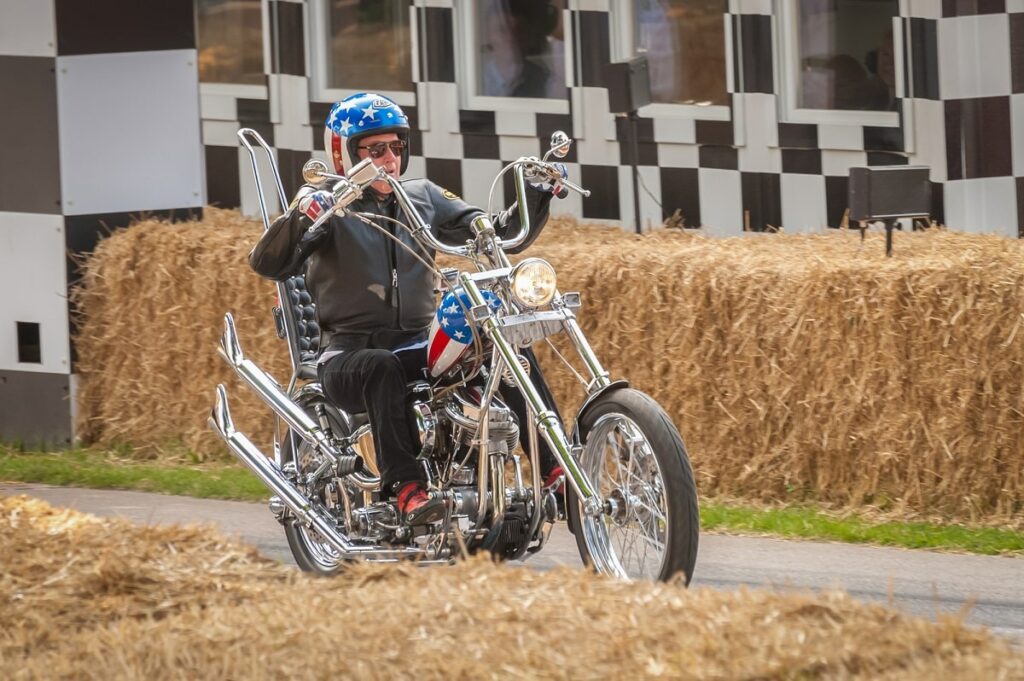There are a few terms and catchphrases you will definitely hear if you are interested in Harley-Davidson motorcycles or around any Harley riders: “V-twin,” “American,” “Listen to that,” and one or all of the following: “Panhead,” “Shovelhead,” “Knucklehead,” and “Ironhead.”
To the majority of the people, these probably sound like wrestler names or a team of supervillains in the latest superhero universe. However, these terms are actually names for various Harley-Davidson engines.
Just as the Harley brand has a strong following within the motorcycle world, there are also loyal fans of specific engines among these classic bike enthusiasts. The Shovelhead- and Panhead-powered Harleys are some of the favorite bikes of yesteryear, so we’ve put them side by side to demonstrate the differences between the two.
Side-by-Side Comparison Chart
Harley-Davidson Panhead History
Harley replaced the Knucklehead engine with the Panhead engine in 1948, and it remained in production until around 1965. The “Panhead” name is a reference to the valve covers looking a lot like a small cake pan.
The Panhead engine was designed to enhance oil containment and prevent leaks, although this design wasn’t particularly successful — Panheads are notorious for top-end oil leaks.
Harley-Davidson Shovelhead History
The Shovelhead engine, named for its up-turned shovel appearance, was born in 1966 and stayed in production until 1985. The idea with the Shovelhead was to make Harleys go faster. Harleys were — and are — heavy, and engineers wanted to produce a more powerful engine that would result in a more competitive performance.
Harley was looking to fit its bikes with rear suspension and electric start, and a new engine was necessary to keep up with the growing international market. The Shovelhead engine provided faster cooling thanks to more shallow chambers as well as significantly higher compression ratios.
Engine Similarities and Differences
Both engine types had the fundamentals in common: traditional V-twin designs, two cylinders, and four valves for a total of eight valves on each cylinder head. Both engines had a 74-cubic-inch displacement.
However, that’s where the similarities end.
- The Panhead’s combustion chambers were side by side, whereas the Shovelhead’s faced each other, which produced more torque.
- The Shovelhead produced more power and torque.
- The Shovelhead eventually upgraded to a 82-cubic-inch displacement (1340cc), bigger than any Panhead displacement.
- Despite being produced to prevent oil leaks and improve oil control, the Panhead was plagued with oil leak issues; the Shovelhead was not.
- The Shovelhead was more efficient and more durable than the Panhead.
- The Panhead had aluminum head covers but the Shovelhead received steel cylinder heads.
The Panhead’s Impact
The Panhead was around to see the birth of the custom bike scene when owners took customizing their bikes to a new level with insane paint schemes and huge raked forks. It was the birth of the chopper.

Arguably the most iconic Harley Panhead is the Captain America chopper that was ridden by Peter Fonda in Easy Rider (co-star Dennis Hopper also rode a Panhead chopper in the movie alongside Fonda). Even 60 years on, there are manufacturers producing Panhead style V-twins for custom motorcycles inspired by the engines and bikes of the past.
During its run, over 100,000 Panhead Harleys were sold in the US.
It wasn’t just the Panhead engine that has cemented the bikes of that era. It’s legendary because at the same time Harley was developing an improved, more competent chassis. Long highway miles were now something to be relished rather than avoided.
The Shovelhead’s Impact
During the initial years of Shovelhead production, Harley was suffering. There were internal disputes and bad business decisions, and the brand struggled to compete with the bikes coming out of Japan.
However, despite all of that, the Shovelhead engine proved to be the exact next step in the evolution of big twins that the world needed. It took all the positives of the Panhead, including the lower end of the engine, and built an even better, more powerful package.
The Shovelhead experienced significantly more changes throughout its production run than the Panhead, some of which were thanks to new, innovative design and a desire for better performance, and others were to fix problems.
Key issues included overheating and engine failure due to a fuel crisis that featured low-quality fuel during the mid-70s. While fixing the oil leak problem of its predecessor, the Panhead engine, there were now new oil issues creating problems elsewhere.
However, the Shovelhead engine remains an extremely popular motor. With companies like S&S Cycles producing upgraded parts, owners can resolve any issues quickly and efficiently. In fact, the Shovelhead is known for being easy to work on, even with basic hand tools.
Many Harley fans consider the Shovelhead the last true Harley engine, one that produced the iconic Harley Rumble that you could wrench on yourself at the weekend.
Which One Is Better?
Choosing between a Harley-Davidson Panhead and Shovelhead is really difficult. On paper, the Shovelhead is more powerful, more efficient, more reliable, and also more affordable.
However, both engines have their own characteristics that made them popular in the first place. With companies still using the Panhead design to produce engines to be used in custom bikes, there’s a lot to be said about the classic Pan shape and features.
Today, both Panhead and Shovelhead engines are easy to work on, with parts available to fix the issues they had at the time of production, which is why they’re both still popular with professional builders and amateurs alike.
So, choosing a Shovelhead or a Panhead is a completely subjective decision, down to personal preference and budget. Currently, buying an original Panhead is the more expensive option. They are more sought after, perhaps because Panhead bikes are older and harder to find.
Shovelheads are still fairly common and easy to get hold of, which means their prices haven’t yet skyrocketed. Their popularity, though, indicates that they, too, will rise in value with age.